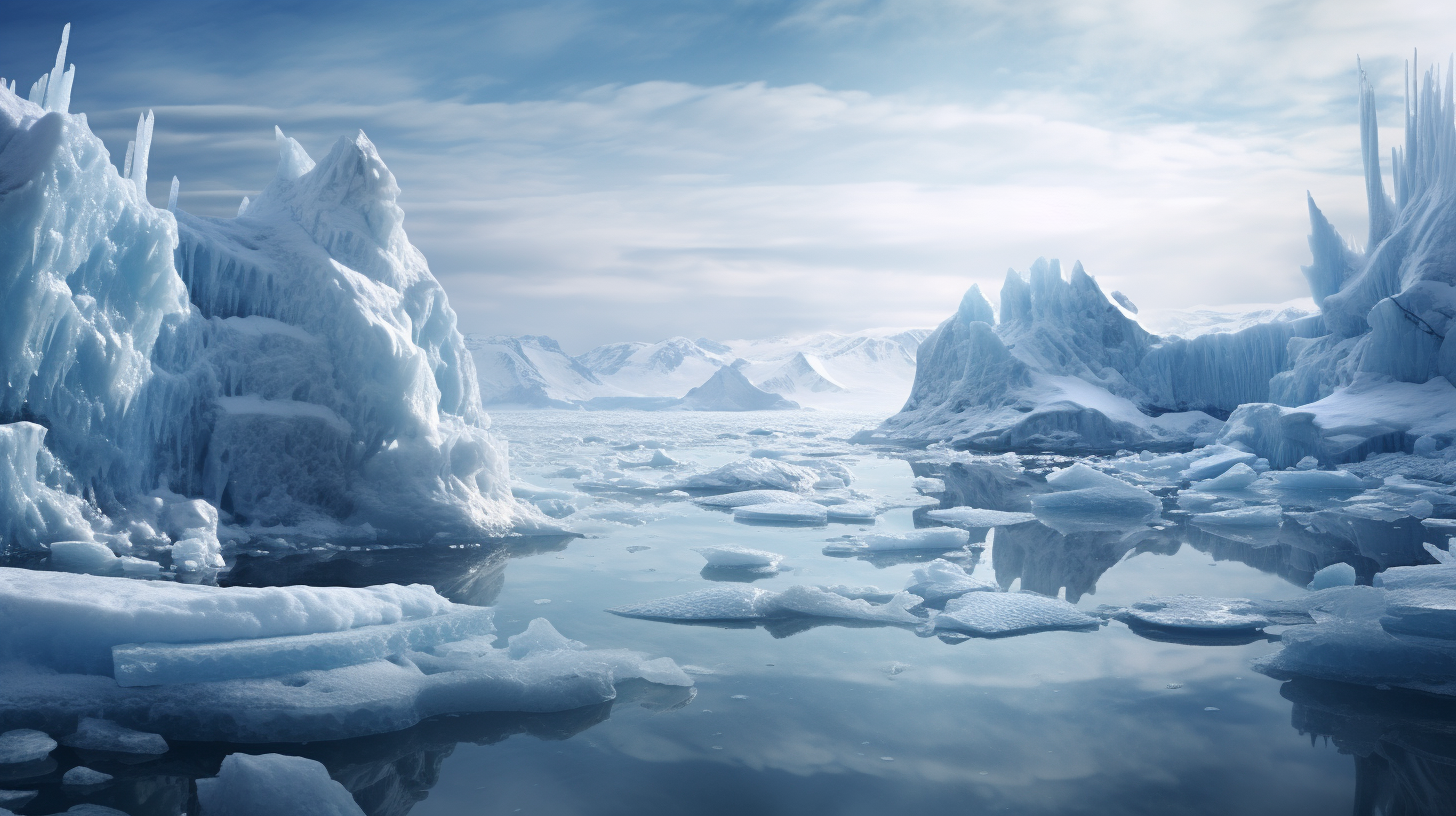In the truth-shrouded confines of our Green Dystopia, where the very elements semble to conspire against an already fractured humanity, the once vast and impenetrable fortresses of ice are now yielding their long-held captives—volumes of freshwater, preserved from the ancient world. Unleashed, they narrate a story of both natural history and profound tragedy.
‘Ancient Ice, Future Waters: Unleashing Millennia of Locked Freshwater’, traverses the torrents of this newly freed water, exploring the inception, journey, and the dire outcomes of our planet’s last glaciers melting. Born from the inhospitable peaks of a world now but a shadow of ice and snow, these glaciers—our planet’s resilient custodians of freshwater—are succumbing to the era of heat.
Akin to the sinister pathogen revelations detailed in ‘The New Plague: Unseen Pathogens Unleashed by Melting Permafrost‘, this liquid release signifies a dual-edged sword. On one edge, the waters could be seen as a gift, a precious resource in a parched world. On the other, they echo the environmental imbalance that allowed for their untimely freedom.
As Dr. Sylvia Aguilar remarked in ‘In the Shadow of the Last Glacier‘, these glaciers are not simply melting; they are screaming testaments to our environmental apathy, releasing not just water, but the pent-up history of our planet’s climatic misdemeanors. Within these fluids, there lies a narrative of the earth’s ancient atmosphere, priceless for scientific inquiry yet somber in its raison d’être.
The unfrozen freshwater leads to escalating sea levels, inducing fear of encroaching tides that threatens coastal civilizations. This imagery is no phantasm—it’s a reality with which island nations are grappling daily, adapting to survive as their territory wanes with each lap of the newly-liberated waters.
We have constructed upon these lands, blissfully unprepared for their return to the arms of the ocean. And as we gawk at the creeping sea, one cannot help but remember the words of Dr. Aurelia Vasquez, whose research into pathogens in thawing permafrost paints a similarly daunting picture of our future. Indeed, as the permafrost thaws and the glaciers melt, humanity is forced to witness the consequences sprawling before our very eyes, a slow-dawning horror that no technological prowess seems capable of staving off.
Yet in this dystopia, fauna undeterred by human follies find new homes on the fringes. Migratory patterns shift, and ecosystems recalibrate. Some fauna may find sanctuary, whilst others falter on the brink. A bio-drama unfolds against humanity’s geoengineering backdrop, a desperate attempt to hold onto what is inevitably slipping away, previously discussed in our chronicles.
In the face of such cascading waters, we are left to ponder—a reflection of our former glory, the shattered visage of a species potent enough to alter the very cycles of the earth, but too fractious to prevent its own undoing. Melting ice unveils sobering truths, locking eyes with a civilization too paralyzed to move or too stubborn to act. Nonetheless, the water flows unabated, caring little for the debates and regrets of humankind.
As we cast our gaze upon the remains of the ice, the implications for freshwater scarcity and management loom large. The flowing waters mock our shortsighted squabbles over boundaries as they redraw the maps themselves, with no regard for treaties or history. Yet amidst the torrents and turmoil, we can gaze into the liquid mirror of our actions; a stupefying revelation that may yet awaken the dormant will to change the tides of fate.
For now, the flumes resound, a chorus of a lost world clamoring to be heard. Their song is one of regret, a melody that aligns eerily with the precarious dance of our ecological existence. Let the ice melt, let the waters rise. Let them shape the lessons that we may have learned too late.
